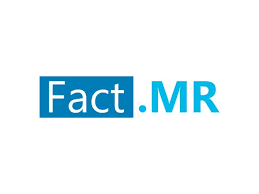Bone Mineral Densitometry Market Expands with Aging Population Needs

The global bone mineral densitometry (BMD) market, valued at US$ 351.2 million in 2024, is projected to grow at a compound annual growth rate (CAGR) of 3.5%, reaching US$ 495.1 million by 2034, according to a recent report by Fact.MR. This growth is driven by the rising prevalence of osteoporosis, technological advancements in diagnostic tools, and increasing awareness of bone health, particularly among aging populations.
Market Dynamics and Key Drivers
Bone mineral densitometry measures bone mineral density (BMD) to diagnose osteoporosis, monitor treatment efficacy, and predict fracture risks. The report highlights that the global rise in osteoporosis-related fractures, projected to increase by 310% for men and 240% for women by 2050 compared to 1990, is a primary driver. This surge is particularly significant among postmenopausal women, who experience a 30% to 50% reduction in bone density due to declining estrogen levels, making them highly susceptible to osteoporosis.
Technological advancements, such as volumetric scanning and 3D modeling, are enhancing the precision of BMD assessments. These tools provide high-resolution images and accurate body composition analysis, enabling better clinical decision-making. The report notes that dual-energy X-ray absorptiometry (DEXA) remains the gold standard for BMD measurement, though its high cost, ranging from US$ 9,180 to US$ 199,000, limits adoption in underdeveloped regions.
Analytical Perspective: The Bone Health Continuum
To analyze the BMD market, we introduce the Bone Health Continuum, which views the market as a spectrum of prevention, diagnosis, and treatment. This framework highlights how BMD technologies bridge the gap between early detection and long-term bone health management.
1. Prevention: Raising Awareness
The increasing prevalence of osteoporosis is driving awareness campaigns, such as those by the International Osteoporosis Foundation, which emphasize early detection. The report notes that healthcare facilities are installing more BMD devices to meet this demand, particularly in diagnostic centers and orthopedic clinics.
2. Diagnosis: Precision and Innovation
Advancements in volumetric scanning and 3D visualization are revolutionizing BMD diagnostics. These technologies reduce errors and provide detailed insights into bone mineral content, enabling physicians to predict fracture risks accurately. The report highlights that these innovations are creating opportunities for manufacturers to develop specialized scanning facilities.
3. Treatment: Supporting Bone Health
BMD assessments guide osteoporosis treatment, recommended for over half of postmenopausal women and one-sixth of men aged 50 or older. The report notes that bone tissue engineering, using 3D scaffolds for cell proliferation, is increasing demand for BMD devices to monitor treatment outcomes.
Regional Insights and Market Opportunities
North America and Europe lead the BMD market due to high osteoporosis prevalence and advanced healthcare infrastructure. The U.S. is a key market, driven by widespread adoption of DEXA systems. The Asia-Pacific region, particularly Japan and South Korea, is expected to grow rapidly due to aging populations and increasing healthcare investments. Emerging markets in Latin America and the GCC countries offer growth potential as awareness and infrastructure improve.
Challenges and Competitive Landscape
The high cost of BMD systems is a significant barrier, particularly in resource-constrained regions. The report notes that transitioning to digital technologies also poses challenges for smaller healthcare facilities. Key players, such as GE Healthcare and Hologic, are addressing these issues by developing cost-effective and portable BMD devices. Strategic partnerships with healthcare providers are enhancing market penetration.
Future Outlook: A Foundation for Bone Health
The BMD market is poised to support global bone health initiatives through the Bone Health Continuum. Emerging trends, such as AI-integrated diagnostics and portable BMD devices, will enhance accessibility and accuracy. As osteoporosis prevalence rises, BMD technologies will remain critical for early detection and treatment.
- Information Technology
- Office Equipment and Supplies
- Cars and Trucks
- Persons
- Books and Authors
- Tutorials
- Art
- Causes
- Crafts
- Dance
- Drinks
- Film
- Fitness
- Food
- Jocuri
- Gardening
- Health
- Home
- Literature
- Music
- Networking
- Alte
- Party
- Religion
- Shopping
- Sports
- Theater
- Wellness



